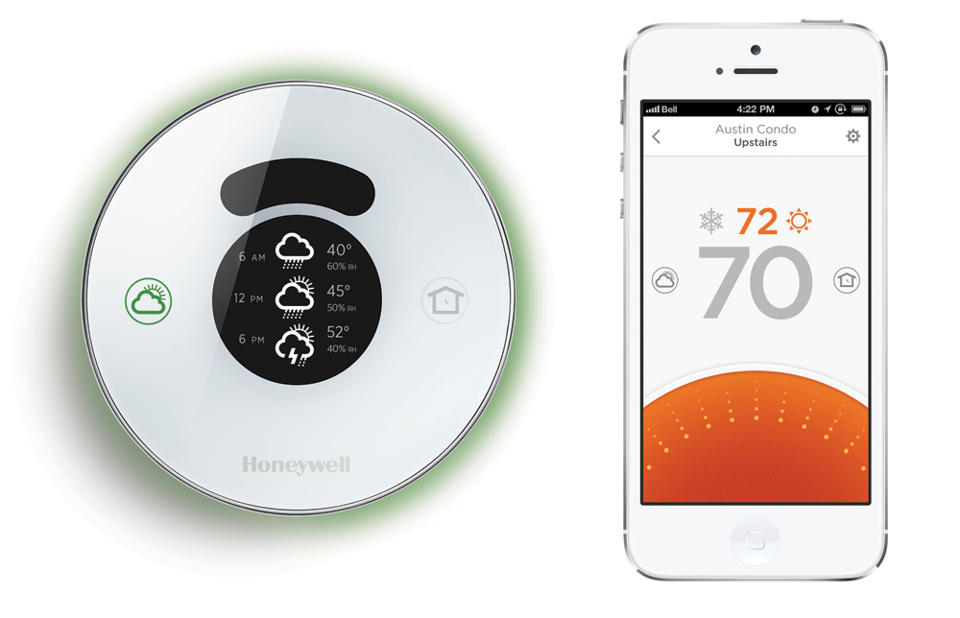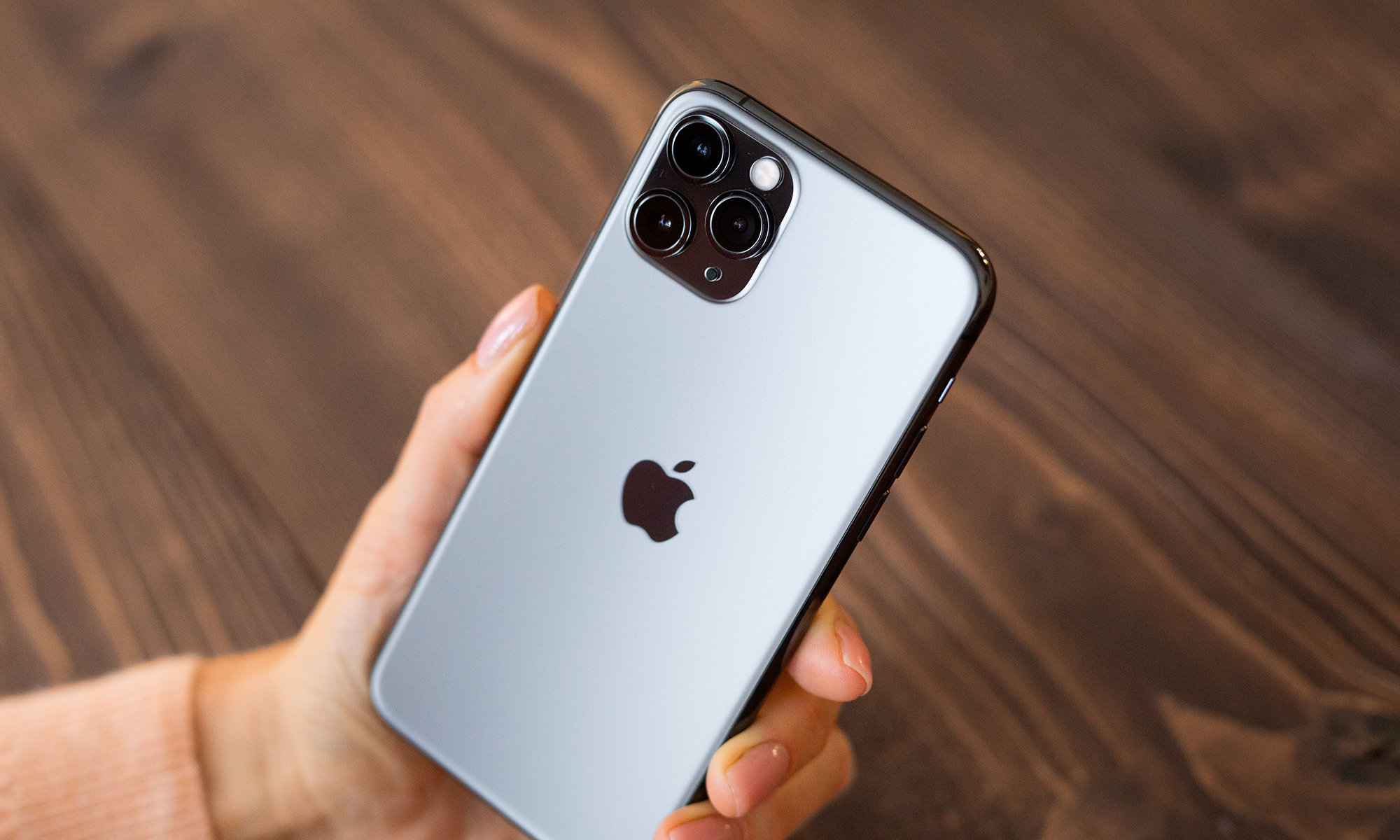
Honeywell's new Lyric thermostat uses geofencing to tell when users leave or come home. Source: Honeywell.
Companies are gearing up to connect nearly everything to the Internet, and your home has become the most recent battlefield. As more companies dive deeper into the so-called Internet of Things, investors can expect the connected home to one of the most sought-after spaces going forward.
Who the major players are
In the past two weeks the connected home has moved to the forefront of technology conversations. Last week, Apple (AAPL 0.57%) debuted its HomeKit system aimed at paring connected home devices like thermostats, lights, door locks, etc. to each other on one simplified platform.

The Nest thermostat, owned by Google. Source: Nest.
Just this week Honeywell (HON +1.34%) threw its hat into the connected home ring with its new Lyric thermostat, which adjusts temperature settings using geofencing, which tells whether or not a user is coming or going based on the location of their smartphone, or multiple smartphones. Honeywell's foray into the connected home comes on the heels of smart home leader Nest's acquisition, which Google (GOOG +0.56%) (GOOGL +0.58%) recently purchased for $3.2 billion.
Not to be forgotten, Samsung (NASDAQOTH: SSNLF) also has its own SmartHome platform that allows Samsung devices, like its TV, to communicate with other mobile products the company makes. Right now the platform is exclusive to Samsung devices, but the company has said in the past it plans to open it up to third party devices.
But it's not just the big public companies that are competing. Vivint is a leader in home security and just this week launched its own Sky product that connects all of its smart home products to one cloud-based hub. The company says its directly competing against Apple's open integration platform.
What's at stake
According to the wireless industry group GSMA Association, the connected home market is worth $10 billion this year and will hit $44 billion by 2017. Clearly, Apple thinks there's money to be made from smart home devices. It's new platform will make the iPhone and iPad the core devices for smart home connectivity, and allow third-party devices to not only interact with each other but also receive Siri voice commands.
But in order for smart home connectivity to really take off, the barrier for adoption needs to be lowered. Google's Nest thermostat sells for $249 and Honeywell's Lyric will sell for $279. Those aren't cheap prices, but they also aren't terribly expensive considering the technology inside them and the potential energy savings they bring. As the cost of these devices -- and others like connected door locks and lights -- come down, adoption rates will go up.

Apple's HomeKit automation system made its debut at this year's WWDC. Source: Apple.
Brad Paine, Honeywell's director of product marketing for software applications and services, said in a Silicon Valley Business Journal article back in April, "It's already getting to the point where it's crazy for you to buy a non-connected thermostat, for example. Costs are coming down so much that for a consumer, what you get out of it for a few extra dollars is tremendous over something that isn't connected."
Foolish final thoughts
Obviously there's no clear winner in the connected home space right now, considering we're just getting started. But I like both Apple's and Google's approach to the space. I think buying Nest was a smart move for Google and allows the company to quickly jump into smart home space. Though Nest experienced a setback recently with a flaw in its smoke alarms, I think we'll see the company continue to build out top of the line products with sleek designs and easy connectivity.
As for Apple, it's hard to bet against a new system that brings all the connected devices together. Craig Federighi, Apple's senior vice president of software engineering, pointed out at last week's WWDC that HomeKit will bring together more than a dozen companies who are already making devices for the connected home. Using the iPhone and iPad as the main hub for the connected system could ultimately drive Apple device sales. And for both of those reasons, I'll be keeping a close eye to how Apple uses this system and how quickly other companies adopt the technology.









